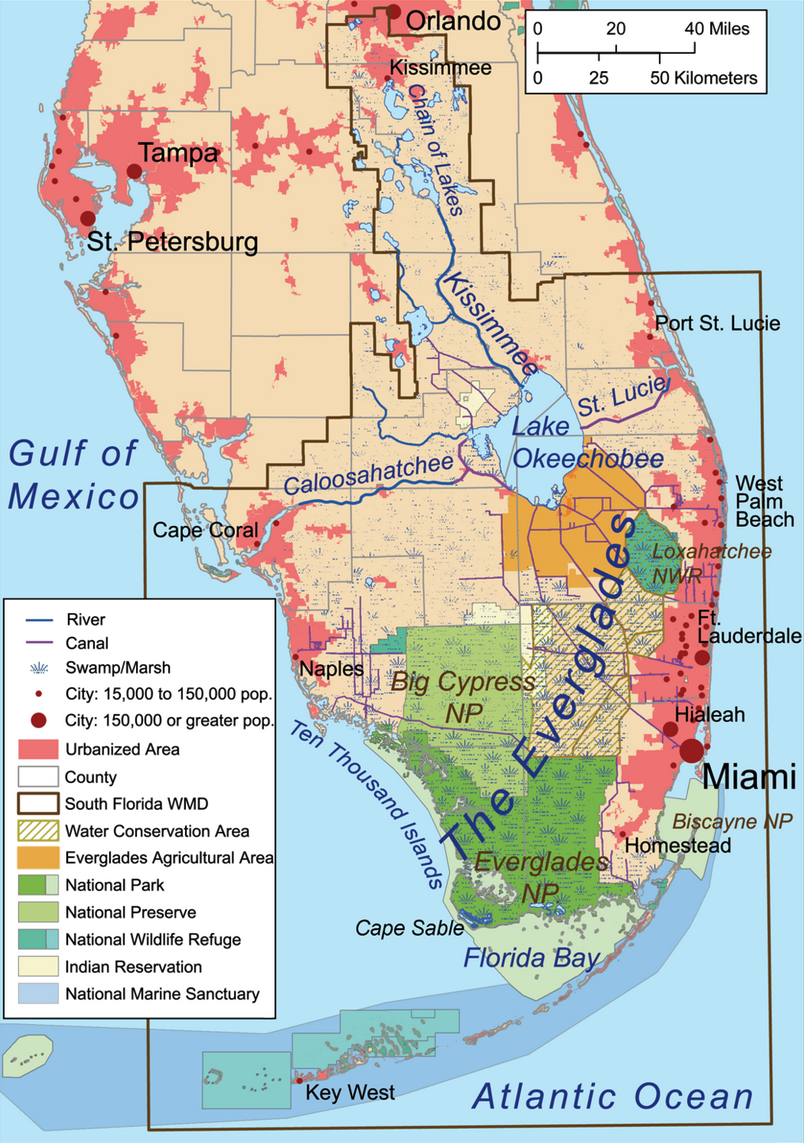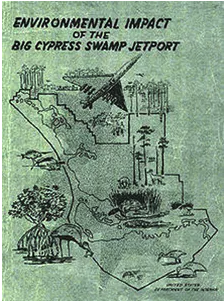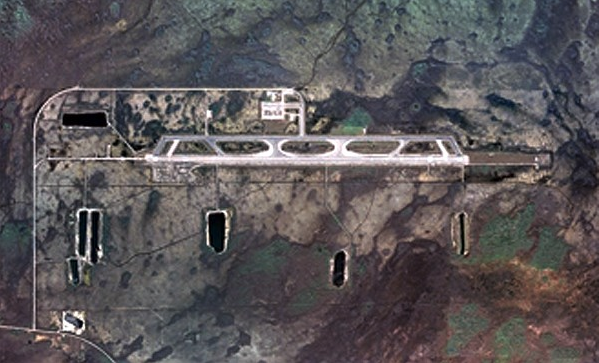The Everglades is a natural region of flooded grasslands in the southern portion of Florida.

PC: Kmusser / Wikipedia / CC BY-SA 3.0
At more than 4,300 square miles, it’s deemed the largest subtropical wilderness in the United States by the National Park Service. The Everglades, “protects an unparalleled landscape that provides important habitat for numerous rare and endangered species like the manatee, American crocodile, and the elusive Florida panther.”
If you explore the Everglades, you’ll see that it’s chock full of grasses, trees, water and animals intermixed with sinkholes. But one thing no one expects to find in, essentially, a 4,300 square mile swamp is a runway. And not just any runway, but one that’s comparable in length to ones you’d typically see at JFK or LAX.
Why is there a giant runway in the middle of the Everglades?
Turns out the runway is all that’s left of the State of Florida’s plan to build the world’s largest airport.
See, back in the 1960s, South Florida was booming. So, according to the National Parks Service, the state wanted to build a jetport that could handle more and more people coming to the state. There were also apparently some pie-in-the-sky aspirations of giant, supersonic planes that could carry hundreds of people each.
The Sonic Boom Problem
The problem with supersonic planes was the sound issue. Sonic booms happening above where people lived and worked wouldn’t be the best idea (when testing supersonic flights over land, there were thousands of complaints about cracked glass and even reports of farm animals dying due to the noise). So the powers that be decided to build an airport in an area that wasn’t populated – the Everglades (technically, it wasn’t in the Everglades, but 6 miles north of its border), about 36 miles west of Miami’s business district.
Work began in 1968. The Everglades Jetport (a.k.a. the Big Cypress Swamp Jetport), would have 6 runways. It’d also have a 1,000-foot-wide corridor that would link the airport to both coasts via new interstate highway and a monorail high-speed mass transit system. All told, the airport would be five times bigger than JFK International Airport and take its place as the largest airport in the world.
But it didn’t work out that way
The government requested a study of the potential impacts of the jetport (which also turned out to be the first ever environmental impact study in the state of Florida). So they asked Dr. Luna B Leopold, senior research hydrologist and former head of the water resources division for the United States Geological Survey to do the study. He, Arthur Marshall (a scientist and everglades conservationist), and Manuel Morris of the National Park Service collaborated on the Environmental Impact Report of the Big Cypress Swamp Jetport.

The report of the study was released in 1969 and was not good news. It started with, “Development of the proposed jetport and its attendant facilities will lead to land drainage and development for agriculture, transportation, and services in the Big Cypress Swamp which will inexorably destroy the south Florida ecosystem and thus the Everglades National Park,” and just got worse from there.
The report prompted a coalition of hunters, conservationists, and citizen activists—including Marjory Stoneman Douglas and the newly formed Friends of the Everglades—to pressure the port authority to find a different location for the jetport. That decision was called the Everglades Jetport Pact.
A Halt to Construction
Construction on the jetport was halted in 1970. By that point, a single 10,500-foot runway had been built. Fifty-something years later, it’s still there—and still in use.
Now part of the 24,960 acre Dade-Collier Training and Transition Airport (a.k.a. “TNT”), the runway is now used as an aviation training facility.

Encompassing the area is Big Cypress National Preserve. Established on October 11, 1974 by President Gerald Ford, it was the nation’s first national preserve, set aside to:
“assure the preservation, conservation, and protection of the natural, scenic, hydrologic, floral and faunal, and recreational values of the Big Cypress Watershed in the state of Florida and to provide for the enhancement and public safety thereof.”
Here’s some more info about it:
Want to comment on this post? Great! Read this first to help ensure it gets approved.
Want to sponsor a post, write something for Your Mileage May Vary, or put ads on our site? Click here for more info.
Like this post? Please share it! We have plenty more just like it and would love it if you decided to hang around and sign up to get emailed notifications of when we post.
Whether you’ve read our articles before or this is the first time you’re stopping by, we’re really glad you’re here and hope you come back to visit again!
This post first appeared on Your Mileage May Vary
